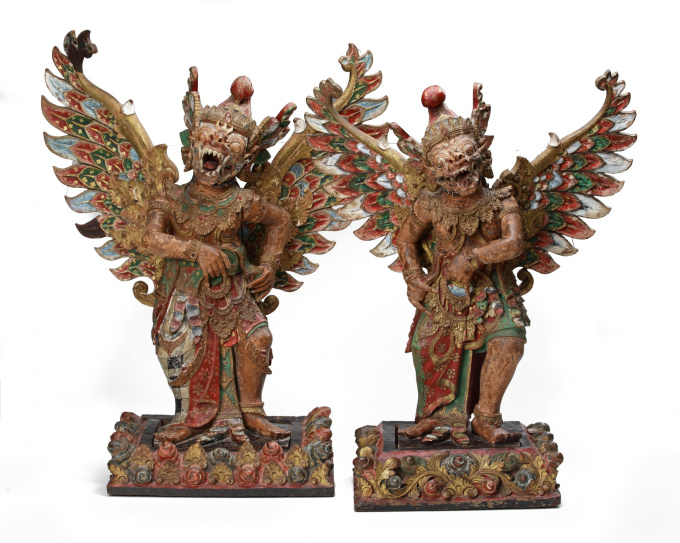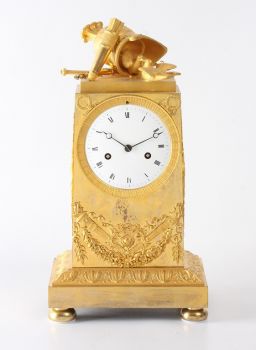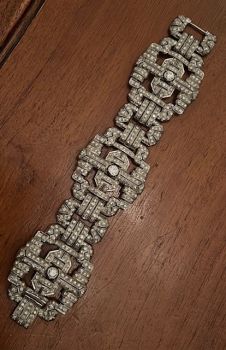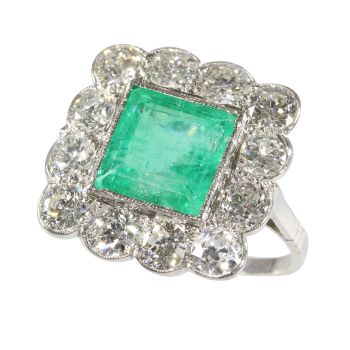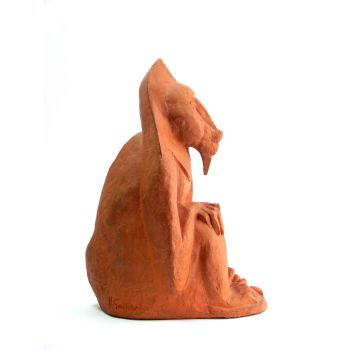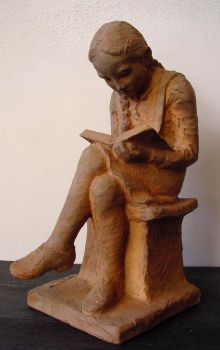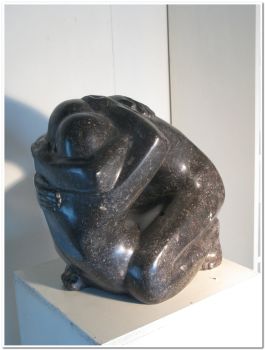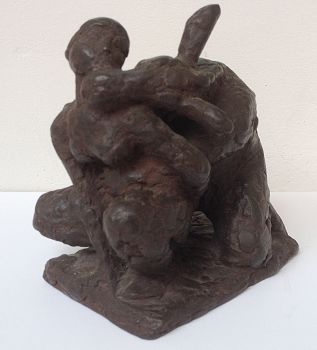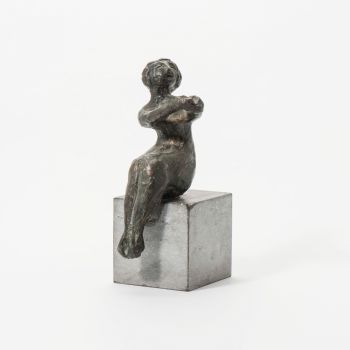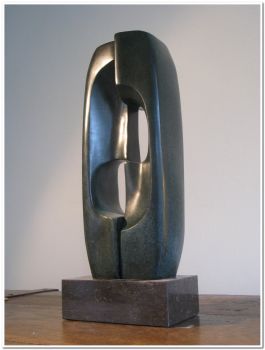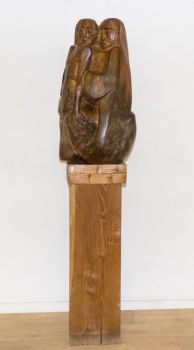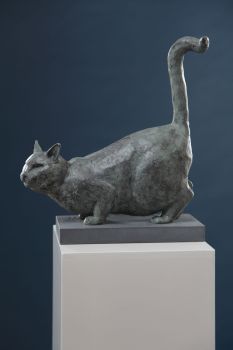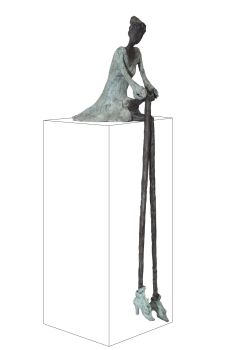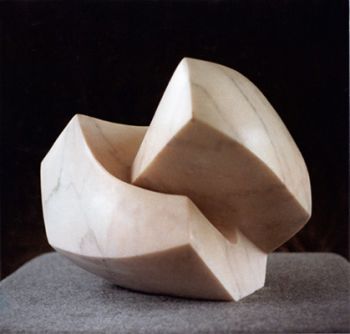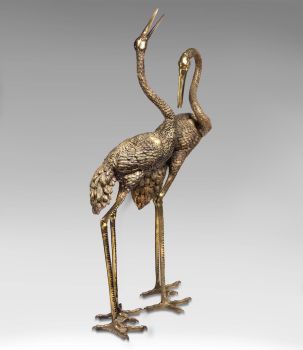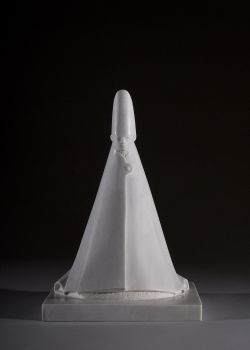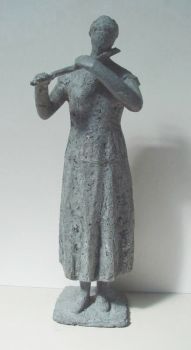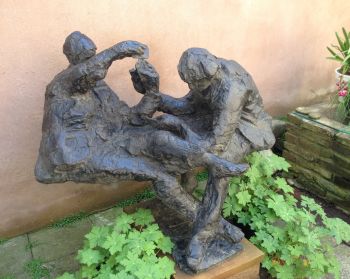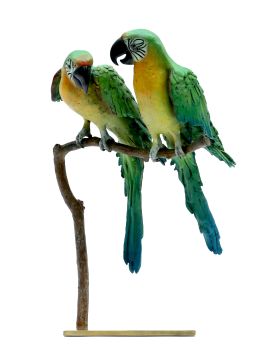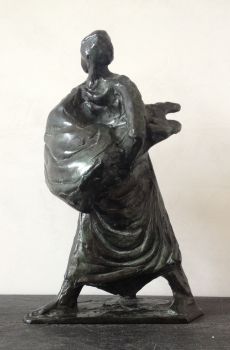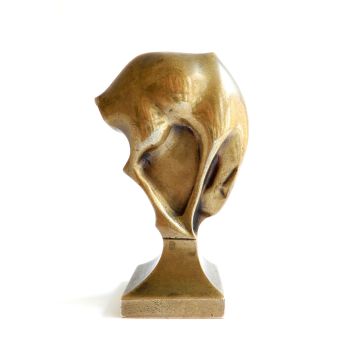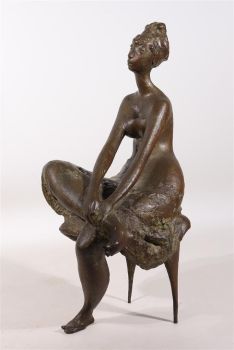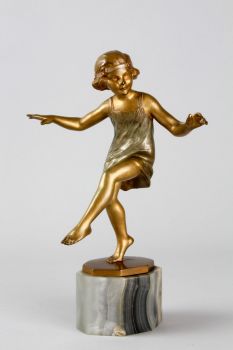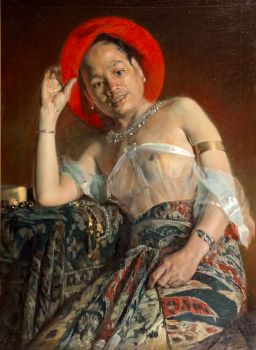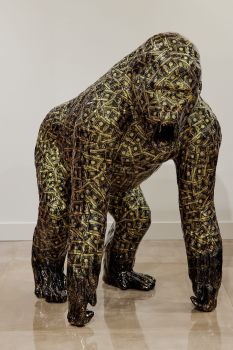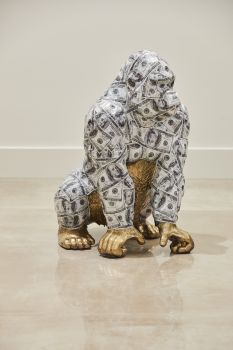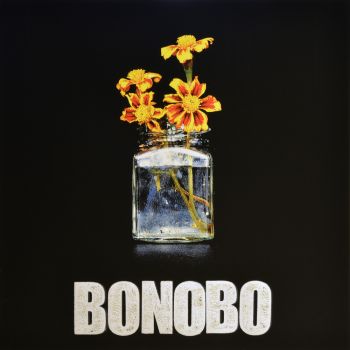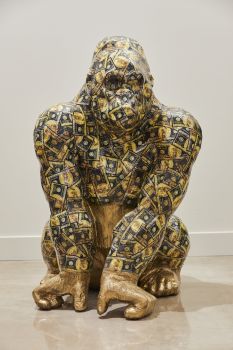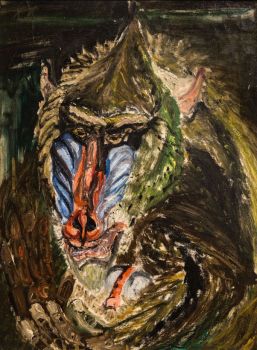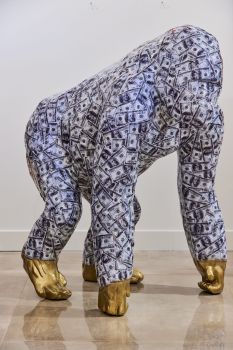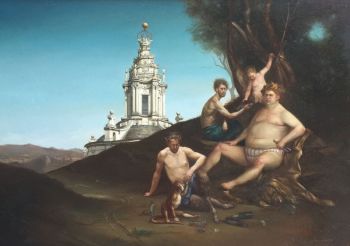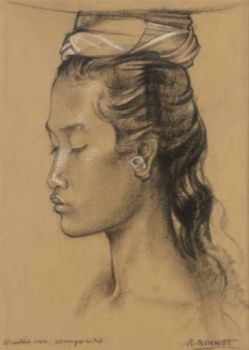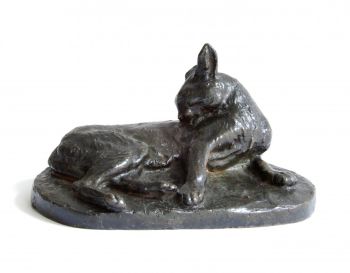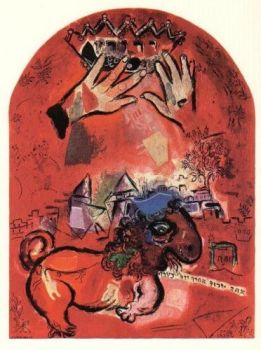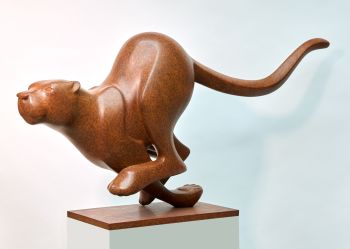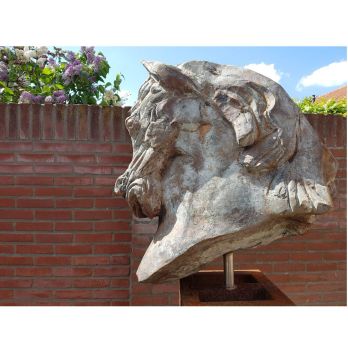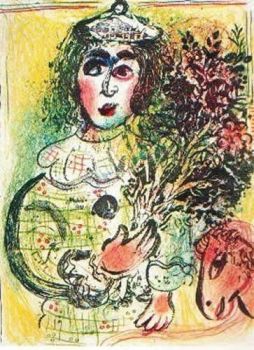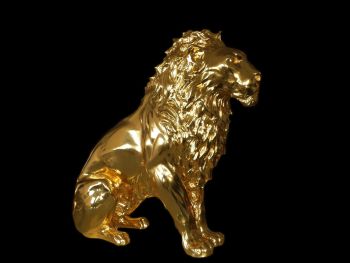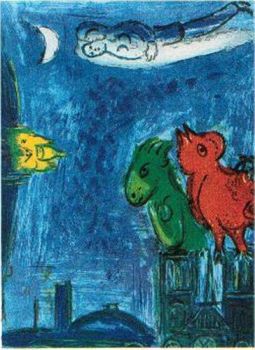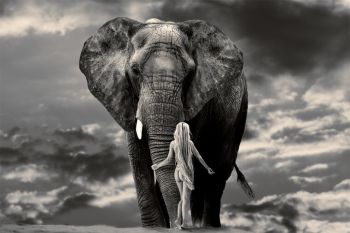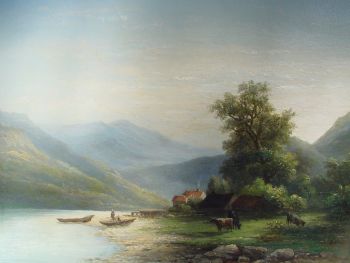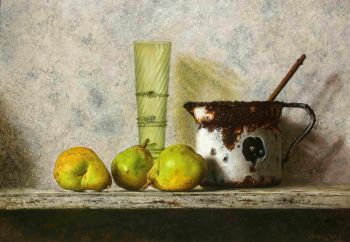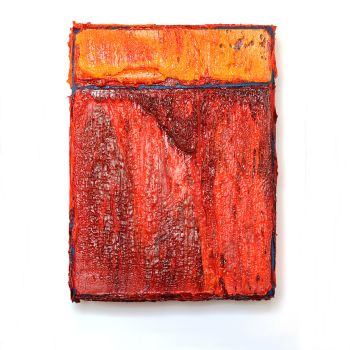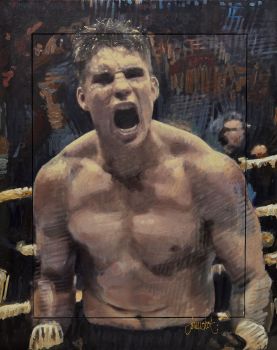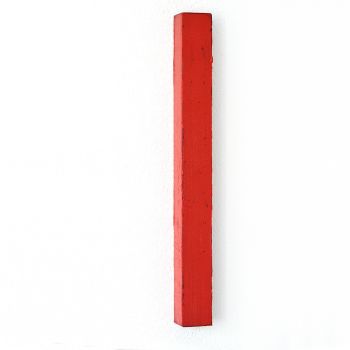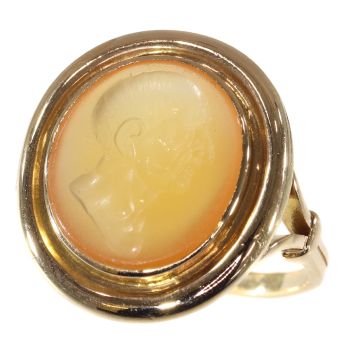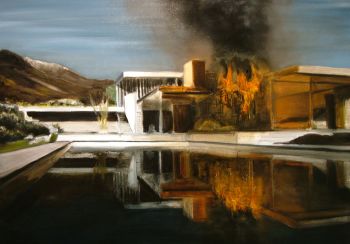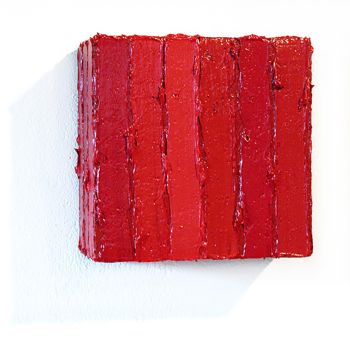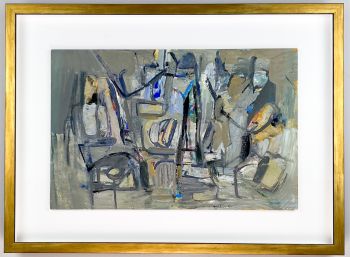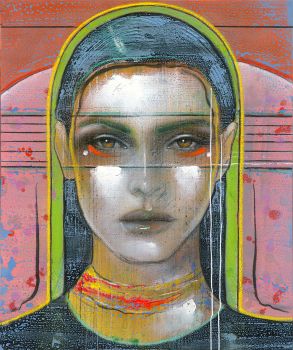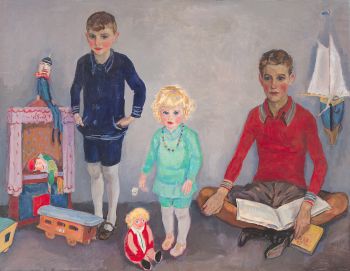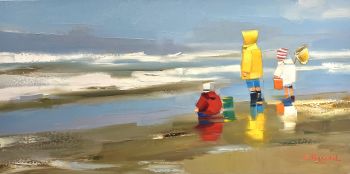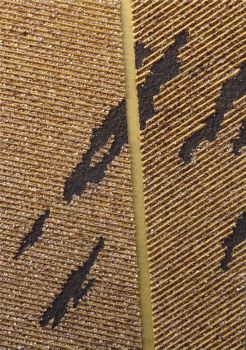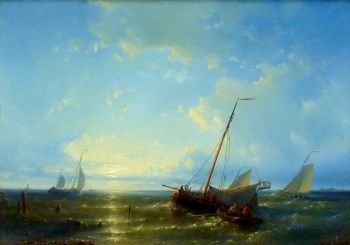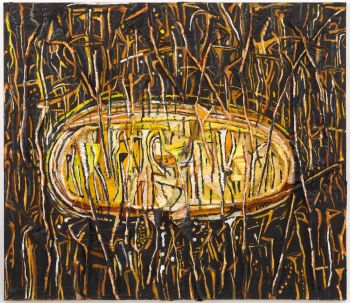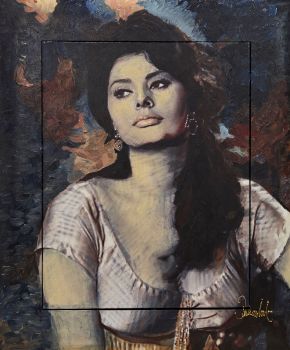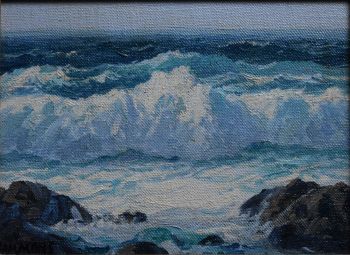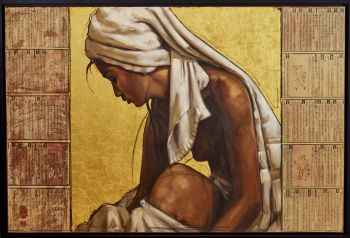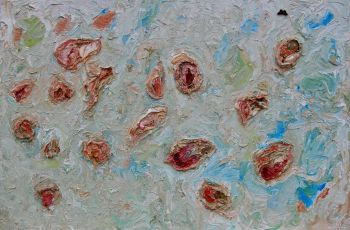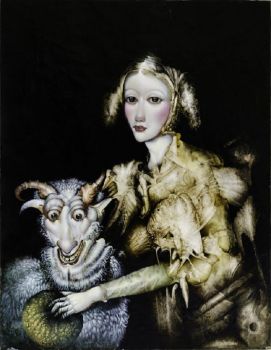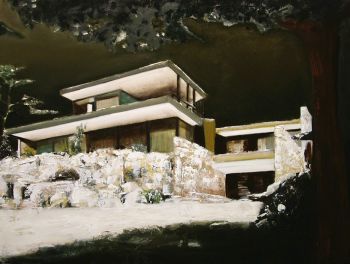Two polychrome wooden statues, North Bali, Singaraja, Buleleng Regence, late 19th century 1900
Unknown artist
WoodNangka wood (Jackfruit)PigmentGoldPaint
78 cm
ConditionMint
Currently unavailable via Gallerease
- About the artworkTwo polychrome wooden statues North Bali, Singaraja, Buleleng Regency, late 19th century
Nangka (jackfruit) wood and pigments and gold
Height: 78 cm and 70 cm (2)
These two winged statues represent the red monkey twins Sugriwa and Subali as they are called in Bali. However, in spite of being identical twins they have different fathers; Sugriwa’s father is Surya, the sun god and Subali’s Indra, the king of gods. Subali, the king of the vahana, the monkeys and bears, believes that his brother Sugriwa is plotting to steal his throne so he drives him away. Sugriwa is introduced by his friend Hanoman, the king of the white monkeys, to Rama who agrees to battle Subali on Sugriwa’s behalf in exchange for the promise that Sugriwa will help him invade Lanka to battle Rawana who has kidnapped his wife, Sita. Rama defeats and kills Subali who at the time of his death realizes that Sugriwa had no ill intentions against him and forgives him for his death. The pair represent both sibling rivalry and the ultimate revelation of the truth. These two statues belong to a class of statues made in the vicinity of Singaraja from about 1890 till 1920, when the were very popular among a growing number of colonials in north Bali. There are early 20th century photos of this type of statues being sold in Surabaya and colonial fairs.
A large number of Bali statues in Dutch museums belong to this class.
I am grateful to Bruce Carpenter for his assistance with this catalogue entry. - About the artist
It might happen that an artist or maker is unknown.
Some works are not to be determined by whom it is made or it is made by (a group of) craftsmen. Examples are statues from the Ancient Time, furniture, mirroirs, or signatures that are not clear or readible but as well some works are not signed at all.
As well you can find the following description:
•“Attributed to ….” In their opinion probably a work by the artist, at least in part
•“Studio of ….” or “Workshop of” In their opinion a work executed in the studio or workshop of the artist, possibly under his supervision
•“Circle of ….” In their opinion a work of the period of the artist showing his influence, closely associated with the artist but not necessarily his pupil
•“Style of ….” or “Follower of ….” In their opinion a work executed in the artist’s style but not necessarily by a pupil; may be contemporary or nearly contemporary
•“Manner of ….” In their opinion a work in the style of the artist but of a later date
•“After ….” In their opinion a copy (of any date) of a work of the artist
•“Signed…”, “Dated….” or “Inscribed” In their opinion the work has been signed/dated/inscribed by the artist. The addition of a question mark indicates an element of doubt
•"With signature ….”, “With date ….”, “With inscription….” or “Bears signature/date/inscription” in their opinion the signature/ date/ inscription has been added by someone other than the artist
Artwork details
Related artworks
- 1 - 4 / 12
Klaas II Mobach
Hanna Mobach, daughter of the sculptor Klaas Mobach, reading1950 - 1970
Price on requestKunsthandel Pygmalion
1 - 4 / 24- 1 - 4 / 24
Corstiaan Hendrikus de Swart
Mountain landscape with Lake1838 - 1900
Price on requestKunsthandel Pygmalion
1 - 4 / 24

